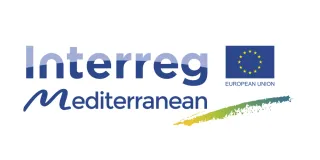UrbiLCA
Relevant project information
Dates
Project website
Role of CIRCE
Grant agreement number
Funded by

Description and objectives
The UrbiLCA project will carry out the development and validation of an innovative quantitative methodology for the analysis and assessment of the energy impacts and CO2 equivalent emissions associated with infrastructures, activities and services of urban areas in the SUDOE territory, taking into account their complete life cycle.
The data collection as well as the validation of the methodology and the results will be carried out in 6 pilot cases (2 in Spain, 2 in France and 2 in Portugal).
This methodology will allow the development of the software tool resulting from the EnerBuiLCA project, predecessor of UrbiLCA. This tool allows the assessment of the energy impacts of buildings, so that a large part of the activities planned in UrbiLCA will be aimed at adapting this tool to the scale of urban areas.
In this way, the project will extend the EnerBuiLCA Computer Tool, incorporating a Life Cycle Analysis Database with environmental and technical information on the main infrastructures, activities and services of the urban areas of the SUDOE area. This will make it possible to obtain a model of the current impact of the urban centers in this area, and to propose technical solutions to reduce their energy and environmental impacts.
This evolution will allow both expert and non-expert users to develop a self-diagnosis of the life cycle impact of an urban area, selecting the facilities and infrastructures with the lowest environmental impact.
Value proposition
The UrbiLCA project aims to promote the saving of energy, raw materials and the reduction of environmental impacts derived from the management of urban areas during their construction, operation and maintenance. Another of Urbilca's main objectives is to promote the use of life cycle analysis (LCA) as an evaluation technique in the design and planning of new areas and in the rehabilitation or retrofitting of existing areas.
In addition, the project will pursue the following secondary objectives:
- Extend the scope of the previous project, EnerBuiLCA, from buildings to urban areas, understood as a set of buildings, infrastructures and services.
- Model the energy and environmental impact of urban areas in the SUDOE territory and assess their level of sustainability and options for improvement.
- Promote the use of the best available technologies in the design, construction, operation and end of life of buildings and infrastructures in urban areas.
- Establish basic criteria for the eco-design of new urban areas and the eco-rehabilitation of existing ones, to help the different agents in the sector (urban planners, municipal technicians, architectural and engineering firms, etc.).
- Generate recommendations for the orientation of public policies to reduce the environmental impact of building and for the improvement of national regulations.
Project partners
CIRCE, LNEG, NOBATEK, ESCI


